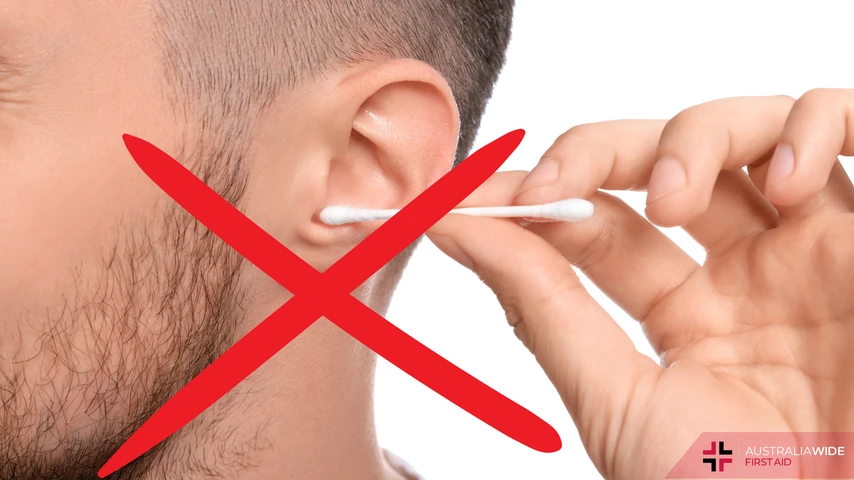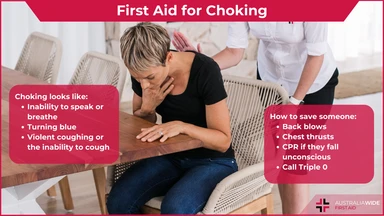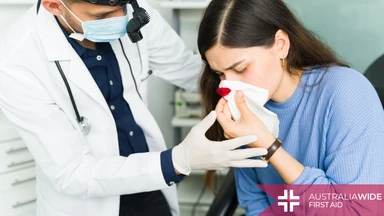How to Treat Fluid Draining from an Ear


Fluid draining from an ear is an uncomfortable and concerning occurrence.
This can be caused by a variety of factors, including ear infections, injury, or even changes in pressure. In some cases, it may be a sign of a more serious underlying issue.
Knowing how to provide first aid for fluid draining from an ear is crucial to alleviate discomfort and potentially prevent complications.
It is important to note that if you see fluid draining from an ear of a person who has recently experienced a head injury, Triple 0 should be called immediately, or the person taken directly to an emergency department.
Otorrhoea is the medical term for any substance draining from an ear.
Sometimes this may be your body expelling wax naturally. Ear wax is comprised of oils and solid substances produced by your ears in order to keep dust and other things out of your ear canals.
Besides wax, it could be pus, blood, or other fluids draining out. The flow could be very slow and thick, or could be very fast and runny.
Other symptoms that can accompany this draining fluid are linked to the underlying cause, and can include:
Many things can cause fluid to drain from an ear, some more concerning than others. They can include:
If you or a loved one are experiencing this, there are a few first aid steps to follow.
It can be quite confronting to experience fluid draining from the ear. You may feel confused, stressed, and very worried, especially if it occurs after an injury.
It's important to stay calm.
Panicking can make the situation more stressful and hinder your ability to provide effective first aid.
Take a deep breath and focus on assisting the person in need.
Ensure that the affected person keeps their head elevated.
This helps to minimize the flow of fluid from the ear and can also reduce discomfort.
Using an extra pillow or cushion under the person's head while they lie down can be helpful.

Don’t try to stop the flow of fluid out of the ear.
Never insert anything, such as cotton swabs or fingers, into the ear canal.
Doing so can push the fluid further inside, potentially causing more harm. It can also introduce bacteria which could lead to an infection.
Neither should you try to wash out the ear or put in any medication until a health care provider has been consulted.
Instead, let gravity and natural drainage take their course. This will help clear the ear and wash away anything that may be inside.
You can gently cover the external ear with a clean, sterile cloth or bandage.
This will help keep the area clean and prevent further contamination. It also helps to prevent the fluid from staining clothes.
Replace the cloth as needed. It may be helpful to keep the used ones in a clean plastic bag to show to medical personnel as a record of what has been happening.
In most cases, fluid draining from the ear requires medical evaluation and treatment.
Contact a healthcare professional or visit the nearest healthcare facility as soon as possible.
They can determine the underlying cause of the drainage and provide appropriate treatment.
Remember, if fluid is draining from an ear of a person who has recently experienced a head injury, call Triple 0 for an ambulance or head to an emergency department immediately.
While awaiting medical evaluation, it's essential to protect the affected ear from water exposure.
This means avoiding activities like swimming or showering where the ear might come into contact with water. This also includes never attempting to wash the fluid out of the ear.
Water can potentially introduce bacteria, alter the internal pressure, and worsen the condition.
Fluid draining from the ear can be a symptom of various conditions, including ear infections or injury.
Be vigilant and monitor for other symptoms that may accompany the fluid drainage, such as:
These symptoms may provide valuable information to healthcare professionals in diagnosing the underlying issue.
Fluid draining from an ear can be a distressing experience, but knowing how to provide proper first aid is essential for comfort and safety.
Remember to stay calm, keep the head elevated, avoid inserting anything into the ear, cover the external ear if necessary, and seek prompt medical attention.
Fluid drainage from the ear can be caused by various factors, and a healthcare professional will be able to diagnose the underlying issue and provide appropriate treatment.
By following these first aid steps and seeking medical help, you can help ensure the best possible outcome for the person affected by ear fluid drainage.

October 13, 2023
Choking occurs when an object or a piece of food becomes lodged in the throat, blocking the airway. The adult or child will have difficulty breathing, and may lose consciousness. Quick and effective action is essential to prevent severe consequences and death.

September 22, 2023
Knowing how to provide first aid for fluid draining from an ear is crucial to alleviate discomfort and potentially prevent complications.

July 31, 2023
This article covers treatment/first aid for nose bleeds, and also covers all of the common misconceptions and myths about treating a bleeding nose.